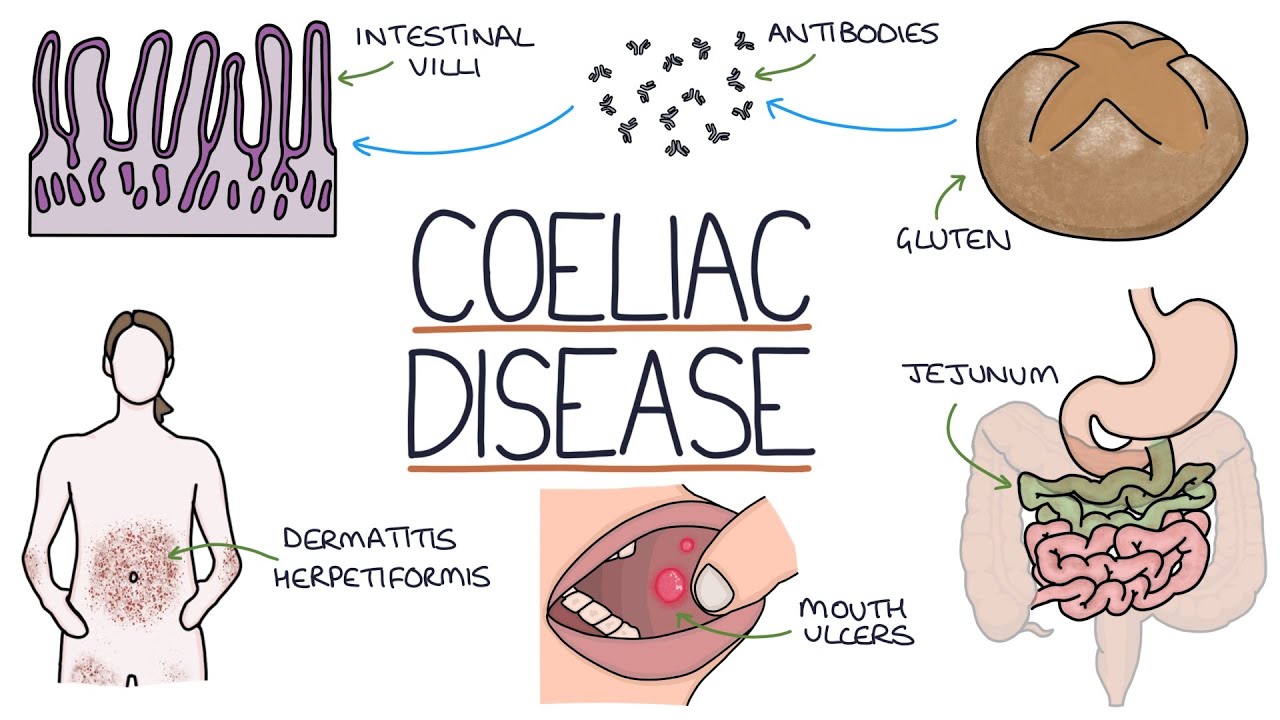Celiac Sprue disease, also known as coeliac disease, is an autoimmune disorder that affects the digestive system. It is caused by an abnormal immune response to gluten, a protein found in wheat, barley, and rye. When someone with celiac disease consumes gluten, their immune system reacts by attacking the lining of their small intestine, which can cause damage to the villi – small finger-like projections that help absorb nutrients.
Celiac Sprue definition
Celiac sprue, also known as celiac disease, is a chronic autoimmune disorder of the small intestine that is triggered by the consumption of gluten. It causes inflammation and damage to the intestinal lining, leading to malabsorption of nutrients and a range of symptoms. The only treatment is a strict gluten-free diet.
This damage to the small intestine can lead to a range of symptoms, including diarrhea, abdominal pain, bloating, fatigue, and weight loss. Over time, if left untreated, celiac disease can lead to malabsorption of nutrients and an increased risk of developing other health problems, such as osteoporosis, anemia, and certain cancers.
The only treatment for celiac disease is a strict gluten-free diet, which involves avoiding all foods that contain gluten. This can be challenging, as gluten is found in many common foods and ingredients. With a careful planning and management, most people with celiac disease can lead a healthy and normal life.
Celiac Sprue Meaning
Celiac sprue, also known as celiac disease, is an autoimmune disorder that affects the small intestine. It is triggered by the ingestion of gluten, a protein found in wheat, barley, and rye. In individuals with celiac sprue, the immune system attacks the lining of the small intestine when gluten is consumed, causing inflammation and damage to the intestinal villi, small finger-like projections that are responsible for nutrient absorption. Over time, this damage can lead to malnutrition and a range of other health problems. Celiac sprue is a chronic condition that requires lifelong management through a gluten-free diet.

Celiac Sprue Disease Symptoms
The symptoms of celiac sprue can vary from person to person, and some individuals may not experience any symptoms at all. However, common symptoms of celiac sprue include:
- Digestive issues: Abdominal pain, bloating, diarrhea, constipation, gas, and nausea are common digestive symptoms of celiac sprue.
- Skin problems: Dermatitis herpetiformis, a type of skin rash that is intensely itchy and usually appears on the elbows, knees, and buttocks, is often associated with celiac sprue.
- Fatigue: Individuals with celiac sprue may feel tired or lethargic, even after a good night’s sleep.
- Joint pain: Some people with celiac sprue may experience joint pain, stiffness, and swelling.
- Headaches: Recurrent headaches or migraines may be a symptom of celiac sprue.
- Anemia: Celiac sprue can cause iron-deficiency anemia, which can lead to fatigue, weakness, and shortness of breath.
- Weight loss: Unintentional weight loss may occur in some people with celiac sprue.
It is important to note that these symptoms can be caused by other conditions as well, so it is essential to seek medical advice for proper diagnosis and treatment.
What is the difference between gluten intolerance and celiac disease
Gluten intolerance and celiac disease are two different conditions. Both conditions involve a sensitivity to gluten, but they have some important differences. Here are the main differences between the two:
Causes: Celiac disease is an autoimmune disorder, meaning the body’s immune system attacks the small intestine when gluten is consumed. Gluten intolerance, on the other hand, is not an autoimmune disorder, and the exact cause is not fully understood.
Severity of reaction: Celiac disease can cause significant damage to the small intestine, leading to a range of symptoms and long-term health problems. Gluten intolerance typically causes less severe symptoms, such as bloating, abdominal pain, and diarrhea.
Diagnosis: Celiac disease diagnosis requires blood tests and a biopsy of the small intestine. Blood tests and biopsy reveals the damage to the villi. Gluten intolerance does not show up on these tests, and diagnosis is usually made based on symptoms and a process of elimination.
Treatment: The only treatment for celiac disease is a strict gluten-free diet. Gluten intolerance may also be managed by avoiding gluten. Some people may be able to tolerate small amounts of gluten or may only need to avoid it temporarily. In summary, while both gluten intolerance and celiac disease involve a sensitivity to gluten. Celiac disease is an autoimmune disorder. This disease can cause significant damage to the small intestine and requires a strict gluten-free diet for treatment. While gluten intolerance is generally less severe and may not require complete avoidance of gluten
Also Read:
- Pasteurization Process